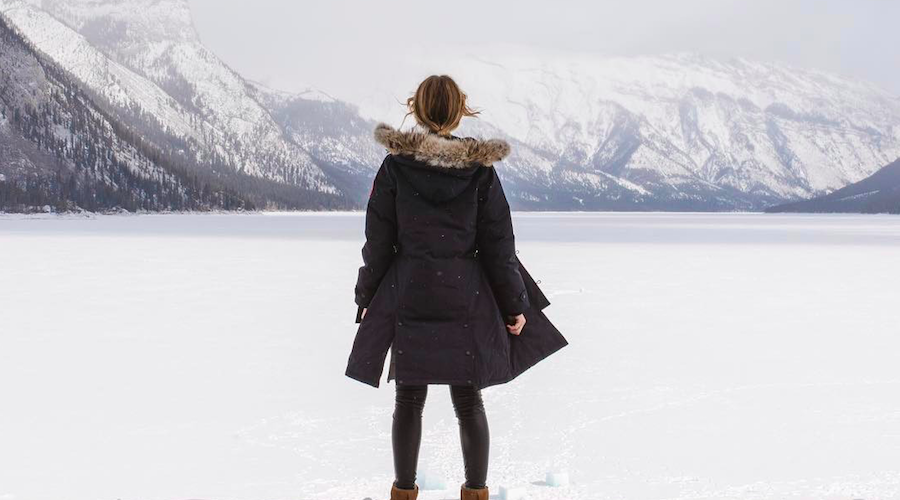While showing its strong track record of sales and profits in recent years, Canada Goose’s prospectus also revealed a number of not widely known or unknown facts about the company.
Writer: Thomas J. Ryan
On Thursday, Canada Goose completed its long-awaited initial public offering. The stock rose more than 25 percent on its first day of trading.
The offering ranked as the second biggest IPO debut of 2017, trailing only the 44-percent gain of Snap Inc., the parent of Snapchat, on its first day of trading earlier this month. While showing its strong track record of sales and profits in recent years, Canada Goose’s prospectus also revealed a number of not widely known or unknown facts about the company.
Here are a few:
Arctic Roots
Founded 60 years ago in a small Toronto warehouse, Canada Goose began as an outerwear manufacturer focused primarily on providing parkas to people working in Arctic, including Canadian Arctic Rangers, and crews from the northern Canadian airline, First Air. The line eventually evolved to meet the needs of outdoor enthusiasts and urban explorers. Canada Goose writes in its prospectus, “Our product offering has evolved significantly since the days of solely making specialty jackets such as the Snow Mantra and Expedition parkas for the severe Arctic environment. We leveraged our tactical industrial heritage, including our long relationship with the Canadian military and law enforcement, to inspire, develop and refine functionally superior in-line collections for extreme conditions and beyond.”
Largely Unknown In The U.S.
According to a survey conducted on its behalf in August 2016 of consumers that have purchased premium outerwear, Canada Goose’s aided brand awareness is only 16 percent in the U.S versus 76 percent in Canada. That’s partly because its launch into the U.S. concentrated in the Northeast. In Boston and New York City, its aided brand awareness is 46 percent. Canada Goose writes in its prospectus, ”We believe there is a large white space opportunity in other regions such as the Mid-Atlantic, Midwest and Pacific Northwest.”
Knitwear And More Coming
To reduce its reliance on outerwear jackets, Canada Goose is expanding its assortments of lightweight down, rainwear, windwear and softshell jackets more suitable for more temperate climates as well as other times of the year with a goal of making Canada Goose a three-season (winter, fall, spring) brand. Knitwear is being “rolled out gradually” this year and next and more categories are promised. Canada Goose’s prospectus states, “Consumer surveys conducted on our behalf indicate that our customers are looking for additional Canada Goose products, particularly in key categories such as knitwear, fleece, footwear, travel gear and bedding.”
Proudly Canadian Made
While not always the case, Canada Goose is indeed Canada-made. One third of its product is made in house in facilities in Toronto, Winnipeg and Montreal. The firm also has long-standing relationships with Canadian third party sub-contractors that add flexibility to its supply chain. The company stressed its Canadian heritage and commitment to local manufacturing are “at the heart” of its business and brand. Canada Goose writes, “While many companies in our industry outsource to offshore manufacturers, we are committed to aggressively investing in producing premium, high quality products in Canada, the country from which we draw our inspiration.”
Protecting Film Sets From The Elements
Canada Goose has recently signed on to sponsor a number of international film festivals, including the Sundance Film Festival and Toronto International Film Festival. But for more than three decades, Canada Goose jackets have been a staple on film sets around the world and “are known as the unofficial jacket of film crews anywhere it is cold” – with no freebies involved. Canada Goose believes its jackets “offer crew and talent the warmth and functionality they need to survive long shoots in the most demanding environments.” And while it hasn’t paid for product placement, its products “have naturally transitioned from behind the scenes to on-camera as a way to authenticate cold weather scenes.”
Goose People
Goose People are a diverse group of brand ambassadors – adventurers, athletes, scientists and artists – who embody Canada Goose’s “values and lifestyle, stand for something bigger than themselves and inspire others through epic adventures and accomplishments.” The list includes Laurie Skreslet, the first Canadian to summit Mount Everest; Lance Mackey, four-time Iditarod Champion, and Karl Bushby who is currently seeking to be the first human to traverse the globe completely with unbroken steps; as well as few current sports stars such as Milos Raonic in tennis, Karina LeBlanc in soccer and Corey Joseph in basketball. Canada Goose writes, “We consider them the epitome of our core belief that greatness is out there.”
Take That, PETA
While incurring the wrath of animal activists, Canada Goose strongly defends its use of fur and down. According to the prospectus: “Our products are made with down because it is recognized as the world’s best natural insulator, providing approximately three times the warmth per ounce as synthetic alternatives and, when necessary, trimmed with real fur to protect the skin from frostbite in harsh conditions. We are committed to the sustainable and ethical sourcing of our raw materials. We have introduced comprehensive traceability programs for fur and down throughout our supply chain which we expect will be fully in effect during the spring of 2017. We only use down that is a byproduct of the poultry industry and we only purchase down and fur from suppliers who adhere to our stringent standards regarding fair practices and humane treatment of animals.”
Photo courtesy Canada Goose










